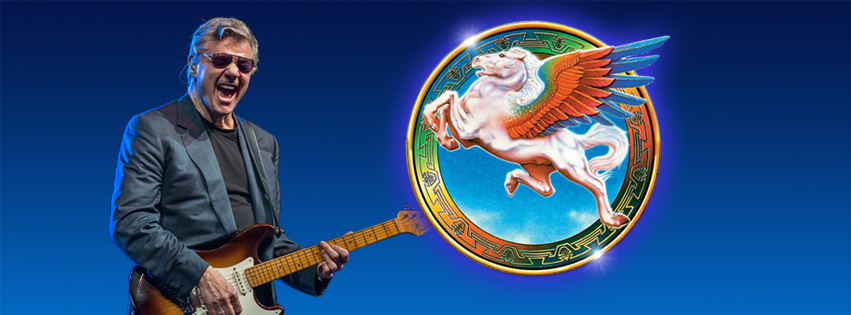Steve Miller- Complete Greatest Hits
 From the time he was a toddler, Steve Miller was surrounded by giants of 20th century American music including Les Paul and Mary Ford, Charles Mingus, and T-Bone Walker. Not just their recorded music, but by them in the flesh, as houseguests in the Miller home in Dallas. You see, Steve’s father, the late noted pathologist Dr. George Miller, was a keen live music fan and amateur recordist who would befriend these musicians when they appeared in Dallas nightclubs, and then open the Miller home to them. Yet even as young Steve Miller learned all about playing Les Paul’s revolutionary invention, the electric guitar, behind his head while doing the splits (a little move T-Bone Walker showed Steve), the obviously musical youngster was not supposed to follow in the visitors’ footsteps.
From the time he was a toddler, Steve Miller was surrounded by giants of 20th century American music including Les Paul and Mary Ford, Charles Mingus, and T-Bone Walker. Not just their recorded music, but by them in the flesh, as houseguests in the Miller home in Dallas. You see, Steve’s father, the late noted pathologist Dr. George Miller, was a keen live music fan and amateur recordist who would befriend these musicians when they appeared in Dallas nightclubs, and then open the Miller home to them. Yet even as young Steve Miller learned all about playing Les Paul’s revolutionary invention, the electric guitar, behind his head while doing the splits (a little move T-Bone Walker showed Steve), the obviously musical youngster was not supposed to follow in the visitors’ footsteps.
“No one ever thought that I would be a professional musician. Ever”, Steve Miller told me.”I was going to go to college, get a degree, get educated, and I was going to work. And that’s the way I was always brought up. I was put in prep school in the seventh grade, St. Marks in Dallas, which is a really good school. And I had my band there, and I just sort of pulled it off while my parents weren’t looking. All of a sudden I had these contracts, $75 a night. And for a while my mom had to drive me and pick me up, she just went right along with it. My father thought the music I played was way too loud, he didn’t like it at all. So that made me like it a lot better!” Miller laughs. “We had a band for five years, Barron Cass, Bob Hayden, my older brother Buddy Miller who I taught to play guitar so that he could drive me to gigs, Roger Galding, and Boz Scaggs, who started out playing tambourine and singing background. When I left to go to college, Boz came up to the University of Wisconsin at Madison. I taught him how to play rhythm guitar real quick that Summer, and we became The Ardells. I was going to get a Comparative Literature degree, get a Masters degree in Literature, and teach it. But after one year in Europe, I came back and everything looked different to me. Comparative Lit was just no fun at all!“ 
What to do? “So I said, ‘I want to go to Chicago.’ Paul Butterfield was down there, and he had just gotten a little write up in Time magazine. I went to Chicago and stayed there for about three years. I went to musical graduate school with Muddy Waters, James Cotton , Junior Wells and Buddy Guy, and Jimmy Reed. We all played the same circuit, we all jammed together on a regular basis. We worked from 9 o’clock at night until 4 o’clock in the morning, six nights a week, for three or four years. It was great, really amazing. But I got tired of playing in Chicago at all of the clubs with all of the drinking. It wasn’t some sort of glamorous thing. Those were hard-nosed nightclubs. I ended up going to San Francisco and getting my contract there. “
Steve Miller covers a ton of ground in this In the Studio exclusive interview with the Rock and Roll Hall of Fame inductee while we discuss musical high points leading up to and following 1976’s Fly Like an Eagle, including “Living in the USA”,”Space Cowboy”, his first #1 “The Joker”; his strong 1977 follow-up Book of Dreams with hits “Jet Airliner”,”Swingtown”, and “Jungle Love”; being a reluctant if not unwitting MTV pioneer with”Abracadabra” in 1982 and “I Want to Make the World Turn Around” in 1986. –Redbeard 









